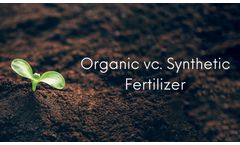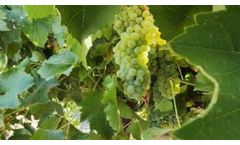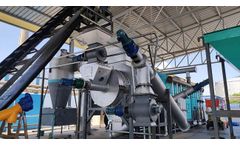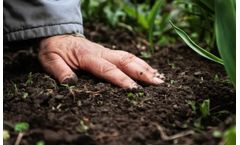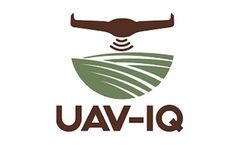Soil Microbial Articles & Analysis
89 articles found
Feeding your plants is a fundamental aspect of nurturing a thriving garden, whether you’re aiming for a bountiful harvest or flourishing blooms. However, the choice of fertilizer significantly impacts the health of your plants and the environment. There are two primary types of fertilizers – organic and synthetic. In this article, we’ll delve into the pros and cons of each, ...
During the 2023 growing season, Mr. Steven Deitz, a research consultant with Sawtooth Ag Research (Selma, CA) conducted a field study using a new ROS mineral oxychloride disinfectant, JC 9465, to control sour rot in mature (6 years old) wine grapes (cv. French Columbard) vineyard. The test site (vineyard) had a history of virus infections that showed symptomology late in the season when under ...
Its porous structure and chemical properties make it highly effective for soil improvement and environmental benefits. Agricultural practices in developing countries often face hurdles such as: Soil Degradation: Continuous farming and overuse of chemical fertilizers deplete soil nutrients. ...
The Microbiome's Role in Plants Microbial communities within plants exhibit marked differences in terms of their composition compared to those in animals. ...
For generations, farmers have relied on chemical fertilizers to boost crop yields. However, these fertilizers come with a hidden cost: environmental damage. Here's where biochar steps in as a game-changer for sustainable agriculture.What is Biochar?Biochar is a charcoal-like substance created by heating organic materials like wood chips or crop residue in an oxygen-limited environment. This ...
Classification There are many classification methods of soil amendment. The details are as follows. According to their properties, soil amendment can be divided into acid soil amendment, alkaline soil amendment, nutrient soil amendment, organic soil amendment, inorganic soil ...
One key technological innovation that is revolutionizing the way farmers manage their land is soil sensor technology. Soil sensors provide real-time data on crucial soil parameters, enabling farmers to make informed decisions about irrigation, fertilization, and overall soil health. ...
ByJXCT
Understanding Intelligent Soil Sensors Imagine a tiny, tireless worker buried deep within the soil, constantly measuring and monitoring the environment. ...
Though it is the foundation of life, soil constitutes only a thin layer of material on the surface of our planet. It provides the necessary weathered minerals, organic materials, air, and water, which are the most precious resources for all living creatures. Plants find life in soil, as it provides a rooting medium and nutrient source for plants to grow. Through healthy plants, ...
The growth in human population has had an important impact on soil and the services and resources it can provide. The consequences of human activities on soil resources resulted in the loss of biodiversity, accelerated erosion, desertification, compaction, nutrient depletion, and loss of soil organic matter (SOM), which is primarily made up of carbon (58%). Considerable losses of soil carbon ...
Its adaptive design accommodates a diverse range of feedstocks, from crop residues to wood chips, adding an element of versatility to its prowess. Soil Enrichment and Nutrient Management The impact of biochar on soil is nothing short of transformative. ...
They go together like salt and pepper – they’re better together When you have a strong and varied crop rotation, it produces a greater diversity in the soil microbiome, which improves activity both above and below the surface. One of the most critical parts about a healthy crop rotation is bacteria – both good and bad – because when you change crops, you change pathogens. ...
Fertilizer Industry The prospect of bioconversion of the high-content keratin wastes into cost-effective and environmentally acceptable resources, such as a slow-releasing nitrogen source for natural and organic soil fertilizer, The organic fertilizer produced by keratinase-mediated waste mineralization can promote the growth of plants, enhance soil water ...
In the process of planting crops, human beings usually suffer from insect pests, which seriously affect the yield and quality of food. In order to prevent and control pests, people have to use pesticides to escort crop planting and production. Organophosphorus is a common pesticide, and improper protection can lead to farmers' organophosphorus poisoning. In order to remove pesticide residues, ...
Inulinase-secreting microorganisms are widely distributed in nature, including various microorganisms in soil, water, and animal digestive tracts. Inulinase can hydrolyze inulin to fructose or fructooligosaccharide under certain temperature conditions. ...
Earth Innovations is a new series from Sound Agriculture that covers the up-and-coming techniques growers are deploying to keep their yields high and their land healthy for generations to come. In each blog post, we break down the benefits and challenges of incorporating new practices, using real growers’ experiences and the Sound Agronomy Team’s expertise. Cover crops are ...
As I "dig" deeper into the soil microbial world I am amazed how much we understand but few utilize what we do know. The word is getting out that if we let the soil microbes thrive and multiply by feeding our soil degradable plant and organic material the microbes will give our plants and crops back the nutrients they need. ...
BIOLOGIX SALT BINDER is a proprietary humidified soil extract with the multiple essential soil microbes included in the formulation. ...
According to Dr. Surendra Dara of the University of California Cooperative Extension, 90-95% of strawberry growers in California use predatory mites to manage two-spotted spider mites. But how did this pest control method get so widely adopted? What can growers of other crops learn from this experience? To discuss this topic, I reached out to Lane Stoeckle, a certified crop advisor and pest ...
Sales agronomists Zach Carlson and Sarah Taylor discuss the relationship between soil microbes and soil health, and how this relationship impacts the bioavailability of the nutrients plants need. The presence of soil microbes makes a functional soil, holding and releasing nutrients that plants require. Proper levels of these microbes reduces plant stress and increases the bioavailability ...

